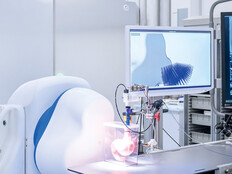Fact: 5G Is Flexible
5G can operate within three spectrum bands — low, middle and high — each with different characteristics that affect performance. For example, 5G can use the lower band (at 1 gigahertz or less, the same used by 4G LTE), which works at longer distances from a transmitter but at reduced speeds.
A middle-spectrum band ranges from 1GHz to 6GHz (the 3.3GHz-to- 3.8GHz range is expected to form the basis of many initial 5G services). The highest-spectrum band, at 24GHz and higher, is poised to offer speeds up to 10 gigabits per second, which is 100 times faster than 4G technology.
Fallacy: 4G Devices Work with 5G
Users can’t take advantage of 5G benefits without a new phone (4G and 4G LTE phones will continue to work on existing infrastructure).
There’s another catch: Few 5G consumer devices are compatible with both low- and high-spectrum bands, meaning that most users will have to evaluate local coverage and price points when making a purchase.
Other complications have fed the noise. A lawsuit settled in 2019 alleged one telecom provider falsely advertised having a 5G network after a small “5G E” logo appeared on phone screens of customers; users weren’t actually connecting to a 5G network.
LEARN MORE: What to expect from 5G in healthcare.
Fact: 5G Will Require New Infrastructure
The shorter-range, higher frequencies that power 5G promise ultrafast, low-latency connections. Accessing them, however, can be interrupted by something as simple as leaves on a tree, a double-paned window or the walls of a building.
That’s because higher frequencies travel shorter distances, so a greater density of transmitters will be required to form a viable 5G network. Doing so means more cell towers, sometimes just hundreds of feet apart, and more antenna tuning (costs that likely will affect consumers).
The promise is that these 5G antennas should be able to support 1 million connected devices per square kilometer, adding much-needed capacity that has been tapped out in the 4G range.











